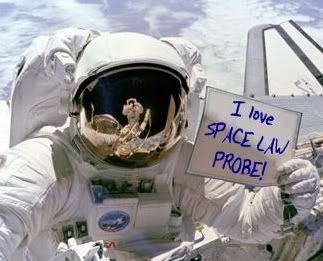6.26.2007
Rohrabacher Wants NEO Hearing
 As everyone knows, those near earth objects can be quite the buzzkill. Or as Rep. Dana Rohrabacher (R-CA) more elegantly states it in a letter last week to his brethren in Congress, NEO's are "a significant threat to our planet." And he means starting with the "20,000 objects, each with the potential energy of 100 megatons of TNT or more," any one of which could, according to NASA's March 2007 report, upon colliding with the home rock, "cause a minimum of 50,000 fatalities."
As everyone knows, those near earth objects can be quite the buzzkill. Or as Rep. Dana Rohrabacher (R-CA) more elegantly states it in a letter last week to his brethren in Congress, NEO's are "a significant threat to our planet." And he means starting with the "20,000 objects, each with the potential energy of 100 megatons of TNT or more," any one of which could, according to NASA's March 2007 report, upon colliding with the home rock, "cause a minimum of 50,000 fatalities."The Congressman finds our current tracking program which would only find 35 percent of those 100 megaton menaces, "woefully inadequate."
And his Survey Act (or, the George E. Brown Jr. Near-Earth Object Survey Act, section 321 of the NASA Authorization Act of 2005, Public Law No. 109-155) would beef things up however, naturally, NASA says funds to implement the Survey appear to be lacking.
Worse, NEO-tracking Arecibo Radio Telescope is set to be mothballed by 2011.
Rep. Rohrabacher wants action.
This is the June 20th letter sent by Rep. Rohrabacher to Rep. Mark Udall, Chairman of the Subcommittee on Space and Aeronautics, requesting a hearing to look into this deep impact matter. (Via SpaceRef)
Specifically, Rep. Rohrabacher asks that "the Space and Aeronautics Subcommittee convene a hearing for the following purposes:
I am all for whatever's gonna work. And let's face it, duck and cover just won't cut it.
* * *
IMAGE: Courtesy, space artist Don Davis.
------------------------
UPDATE: And for more on all this, here is the text of the white paper from the AIAA 2007 Planetray Defense Conference (held in March at George Washington University).
ANOTHER UPDATE: Just in time to make Rohrabacher's point, BBC reports today that "scientists have identified a possible crater left by the biggest space impact in modern times - the Tunguska event." Yoweee. (Via Instapundit)






